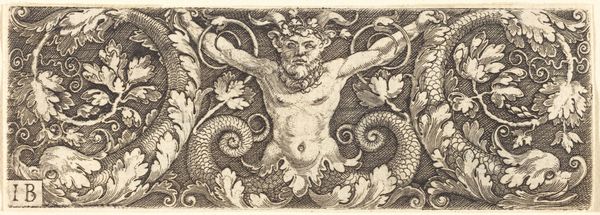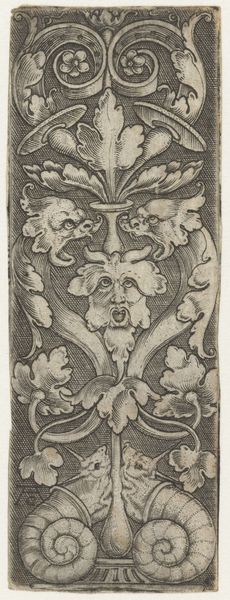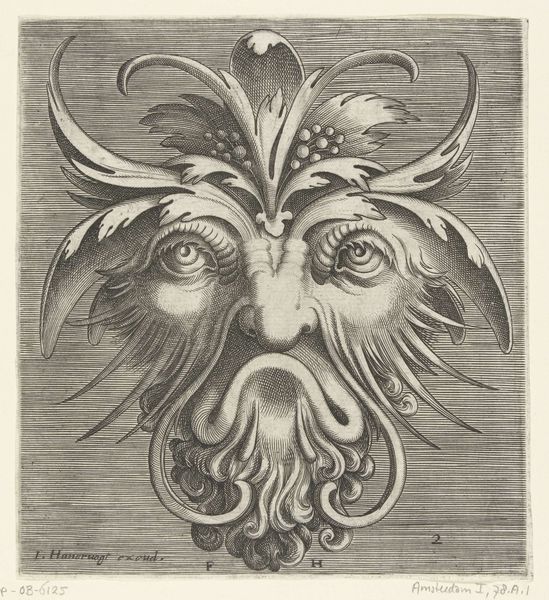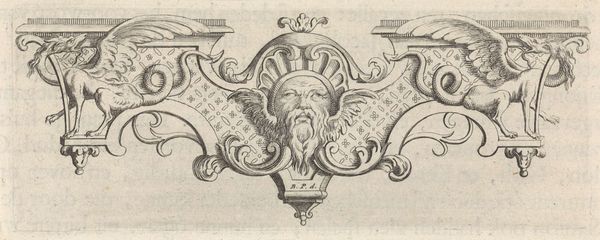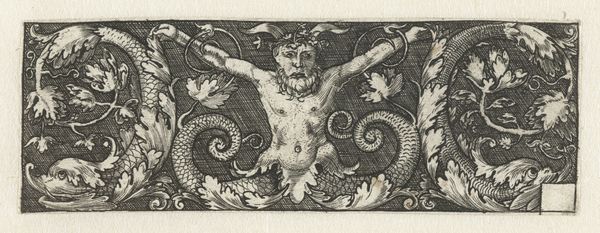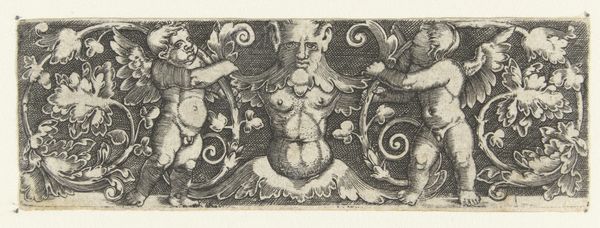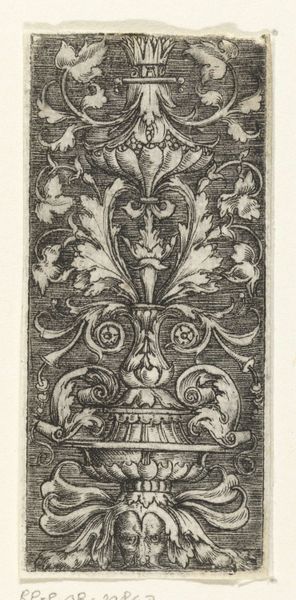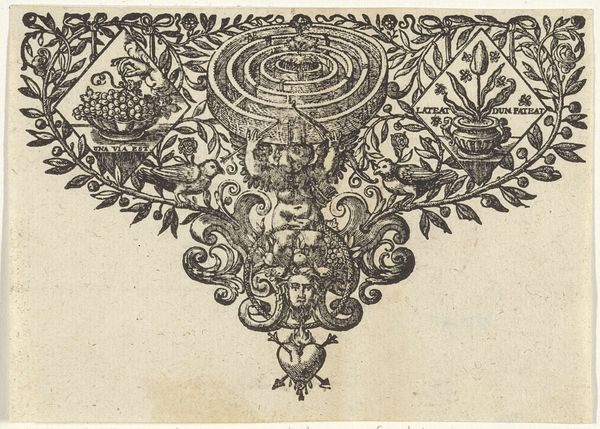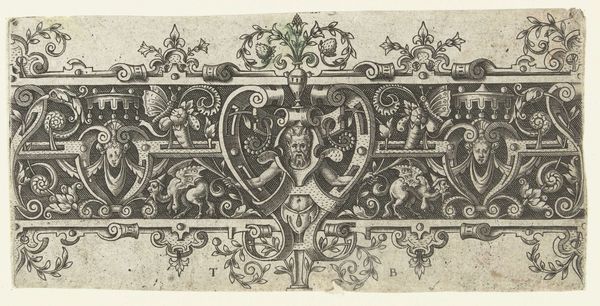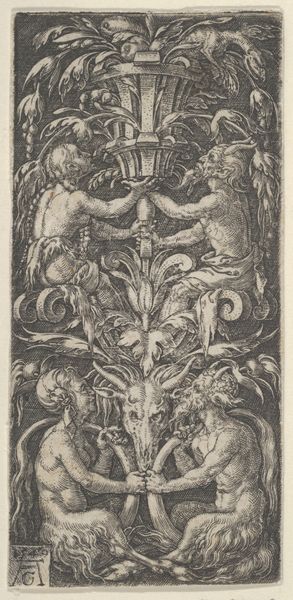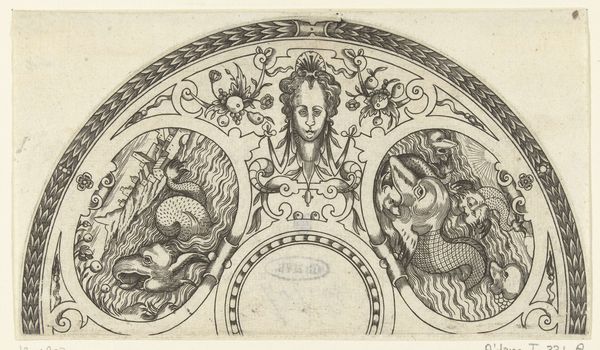
Frieze with a Bearded Mask Wearing a Headdress of Tendrils and Strapwork 1585 - 1595
0:00
0:00
drawing, ornament, print, paper, pen, engraving
#
drawing
#
ornament
#
pen drawing
# print
#
flower
#
mannerism
#
paper
#
11_renaissance
#
pen
#
northern-renaissance
#
engraving
Dimensions: Sheet: 1 9/16 × 6 7/16 in. (3.9 × 16.4 cm)
Copyright: Public Domain
Curator: Welcome. We’re looking at a print by Theodor de Bry, made between 1585 and 1595. It’s called "Frieze with a Bearded Mask Wearing a Headdress of Tendrils and Strapwork," and it is now housed at the Metropolitan Museum of Art. Editor: My first impression is a sense of organized chaos! The composition is densely packed with meticulously rendered details. The balance between organic forms, like the flowers and animals, and the rigid geometry of the strapwork is intriguing. Curator: Indeed. De Bry was a master of ornament, and this piece exemplifies the Mannerist style. These kinds of prints were not just art objects, but served as models for artisans – goldsmiths, engravers, and so on – providing a visual vocabulary for decoration. Editor: Looking closer, the precision of the line work is striking. See how the varying thickness creates depth and shadow, even in this monochrome palette? And that central mask—there's a real dynamism in the contrast of his stoic face and the riot of vegetation sprouting from his head. Curator: Precisely! That bearded mask embodies the grotesque, a popular motif during the Renaissance and Mannerist periods, playing with the boundaries between the human and the natural. Consider the cultural context; this print reflects the era’s fascination with collecting and classifying the natural world, which can be seen through the botanically accurate flower. Editor: It also makes me think about semiotics and meaning making through visual language. The animals – squirrels and rabbits—and even the placement of vases could potentially represent wealth and domesticity within the 16th century context. Curator: And more broadly, ornament such as this helped create elite material culture. Objects decorated with these motifs communicated social status, trade connections, and religious affiliations to a wide public. Editor: I appreciate how this analysis enhances the work. When viewed solely based on aesthetic principles, the engraving showcases masterful handling of line and form. Now, seeing this artwork as more of a cultural document adds greater insight to its composition. Curator: Exactly. Considering its historical and social role helps reveal layers of meaning and functionality, and in understanding it we can recognize it as something beyond just decoration. Editor: Thank you for enriching our observation today. The blending of art and social history provides a depth and texture that goes beyond first impressions.
Comments
No comments
Be the first to comment and join the conversation on the ultimate creative platform.
